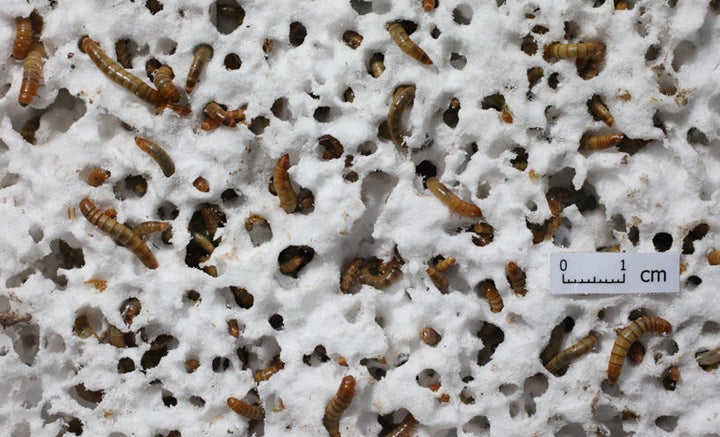
Sure, plastic foam seems great when that cheap cup keeps your coffee warm. And you can't help but appreciate those packing peanuts that keep your breakables safe when they're shipped.
But the lightweight yet durable material, properly known as polystyrene foam, comes at a high environmental cost.
Polystyrene foam doesn't break down easily in landfills. With Americans throwing out at least 2.5 billion foam cups a year, a lot of trash will be sitting around for millennia, contaminating water systems and harming animals.
Now for the good news: scientists at Beihang University in Beijing and Stanford University in California have discovered clues to curbing the plastic foam problem hidden in the guts of hungry mealworms.
"There's a possibility of really important research coming out of bizarre places," Dr. Craig Criddle, professor of civil and environmental engineering who supervised the researchers at Stanford, said in a statement. "Sometimes, science surprises us. This is a shock."
Researchers found that powerful bacteria live in the gut of the mealworm and allow it to consume polystyrene foam -- specifically, the brand-name form called Styrofoam -- and break that plastic down into organic waste. Further study of those bacteria could help scientists develop synthetic enzymes capable of breaking down polystyrene foam.
The research was published Sept. 21 in the journal Environmental Science and Technology.
"The discovery of plastic degradation by mealworms is revolutionary because styrofoam has been considered non-biodegradable," Dr. Wei-Min Wu said in an email. "Understanding the mechanism of plastic degradation by mealworms will lead us to develop new approaches to solve the plastic pollution problem," said Wu, a senior research engineer at Stanford who participated in the research.
In the study, 100 mealworms were fed between 34 and 39 milligrams of Styrofoam every day from birth for a month. Within 24 hours after eating, the creepy-crawlies converted about half of that plastic foam into carbon dioxide and excreted the rest as waste that appeared to be as safe as compost used for crops.
Don't worry about the worms. According to Wu, the plastic-munching creatures stayed just as healthy as a control group of worms given a normal diet.
The existence of these bacteria was previously known -- thanks to a Taiwanese high school student Tseng I-ching, who discovered them in 2009 -- but what they could do inside the mealworms was not understood, The Christian Science Monitor reports.
The new research has scientists very excited. As Wu told CNN, "This is one of the biggest breakthroughs in environmental science in the past 10 years."
Also on HuffPost:

